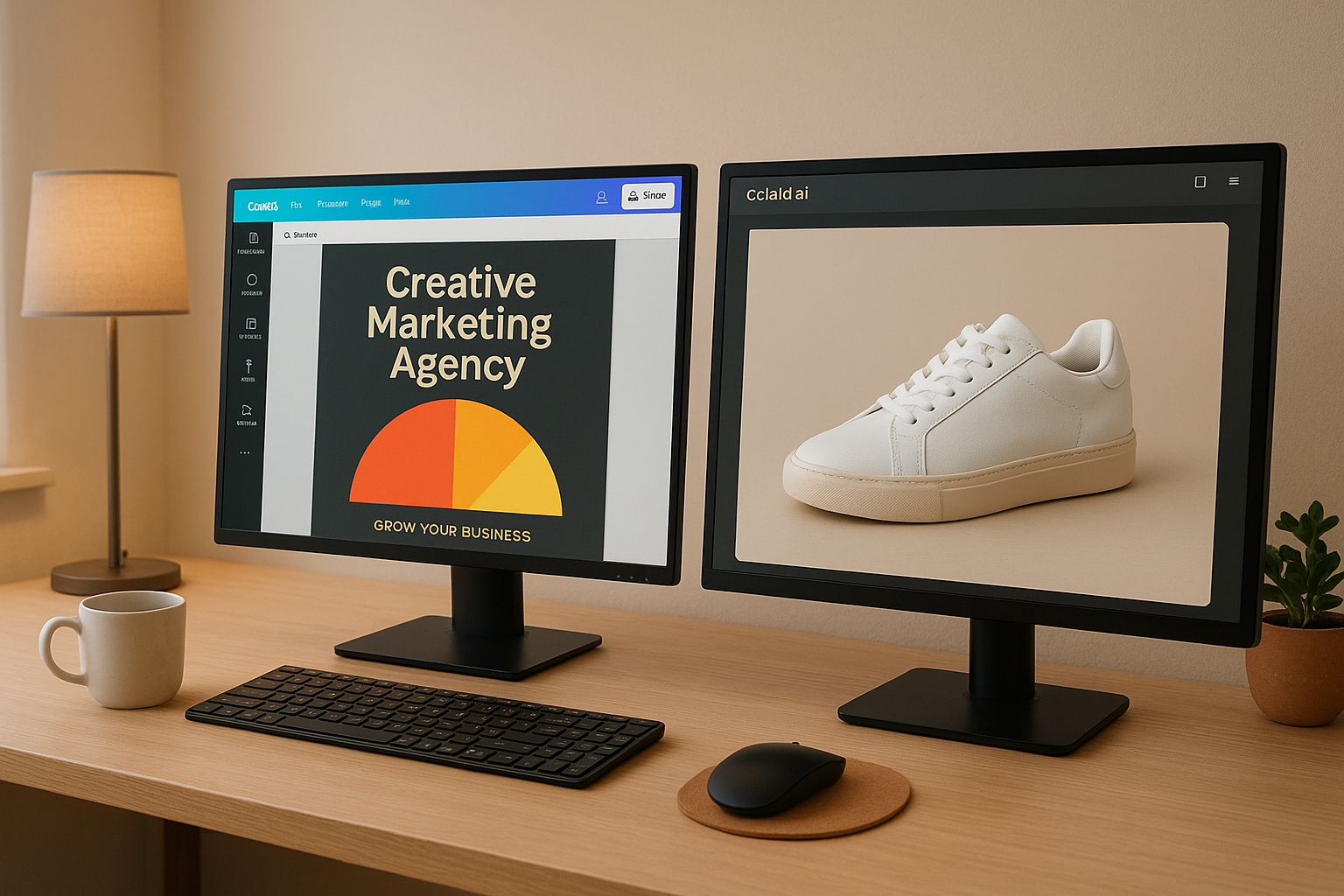AI tools are everywhere, but should you go free or paid? Here’s the bottom line: free tools are great for basic needs, while paid tools offer advanced features, better performance, and more support. Your choice depends on your goals, budget, and how much you’ll use the tool.
Key Differences at a Glance:
- Free Tools: Limited features (e.g., GPT-3.5), basic security, slower speeds, and community support.
- Paid Tools: Advanced models (e.g., GPT-4 Turbo), higher usage limits, better security, and priority support.
Quick Comparison:
| Feature | Free Tools | Paid Tools |
|---|---|---|
| AI Model | Older (e.g., GPT-3.5) | Latest (e.g., GPT-4 Turbo) |
| Usage Limits | Low (e.g., 15 prompts/3 hrs) | High or unlimited |
| Security | Basic | Enhanced |
| Support | Community forums | Priority customer service |
Tip: Start with free tools to test the waters. Upgrade to paid options if you need better performance or advanced features for professional or business use. Read on for more details!
Main Differences: Free vs Paid AI Tools
Available Features
Free and paid AI tools differ significantly in what they offer. Free tools are great for basic needs, but paid tools include advanced functionalities that can improve efficiency and deliver higher-quality results.
| Feature Category | Free Tools | Paid Tools |
|---|---|---|
| AI Model | GPT-3.5 (older) | GPT-4 Turbo (latest) |
| Usage Limits | 15-16 prompts/3 hours | Up to 80 prompts/3 hours |
| Data Access | Limited (Jan 2022 cutoff) | Access to more recent data |
| Advanced Features | Basic text generation | DALL-E 3, advanced analytics |
| Team Features | Individual use only | Collaboration tools included |
While free tools provide essential features, paid options stand out with broader capabilities and better performance.
Speed and Accuracy
When it comes to speed and accuracy, paid tools have a clear edge. They process requests faster and deliver more precise results, especially during high-demand times when free tools may lag or struggle to maintain quality.
Customer Support and Updates
Support and updates also set free and paid tools apart. Free options often depend on community forums and limited documentation, while paid versions include dedicated customer service and frequent updates.
For businesses, these differences are critical. Here's a closer look at support features:
| Support Feature | Free Tools | Paid Tools |
|---|---|---|
| Technical Support | Community forums | Priority customer service |
| Update Frequency | Irregular | Regular and prioritized |
| Security Features | Basic | Enhanced with compliance |
| Documentation | Limited | Comprehensive |
| Response Time | Variable | Guaranteed SLAs |
"AI isn't about creating a troop of robotic salespeople who rely solely on AI to do their jobs. It's about equipping your team with superpowers to close deals faster, understand customers better, and respond quicker." - Collin Stewart, CEO of Predictable Revenue
These differences translate into measurable business results. Companies using paid AI tools have reported a 6.2% increase in sales and a 7% boost in customer satisfaction . The combination of reliable support and regular updates makes paid tools a strong choice for organizations aiming to maximize their AI investments.
Free vs Paid AI Tools - Which Is Worth Your Money?
Best Uses for Free AI Tools
After comparing features, let's dive into how free AI tools can be used effectively.
When to Use Free Tools
Free AI tools are ideal for individuals or small businesses looking for basic AI features without spending money. For example, Rytr offers up to 10,000 characters per month, and Canva Free provides 10 Magic Design uses - perfect for tasks like creating social media content or simple designs .
These tools are also handy for basic tasks in research, academics, and business. Think customer service automation, market research, or straightforward content creation.
Top Free AI Tools
Here’s a quick look at some popular free AI tools and what they offer:
| Tool | Primary Use | Key Free Features |
|---|---|---|
| ChatGPT | Text Generation | GPT-3.5 access, basic prompting |
| Fathom | Meeting Assistant | Unlimited recordings, platform integration |
| Grammarly | Writing Assistance | Grammar checks, tone monitoring, 100 AI prompts |
| Pixlr | Image Editing | AI Cutout and Backdrop tools |
| Publer | Social Media Management | AI post generation, 10 scheduled posts/month |
Here’s an example of what free tools can achieve: A user employed Leo Ideation to design a wheelchair/walker hybrid. The tool helped create detailed renderings and a 17-page technical document covering project requirements, resources, and legal codes .
When choosing a free AI tool, focus on ease of use, output quality, reasonable usage limits, data privacy, and how well it integrates with your workflow. While free tools are great for many basic needs, advanced features in paid versions might be necessary for more complex tasks or higher demands.
sbb-itb-212c9ea
When Paid AI Tools Make Sense
Free AI tools can handle basic tasks, but businesses with advanced needs often turn to paid options for better performance, security, and features.
Business and Professional Uses
For organizations managing sensitive data or requiring advanced capabilities, paid AI tools are essential. They offer enhanced security measures like GDPR and HIPAA compliance, ensuring data protection while improving operational efficiency .
Paid tools can also deliver impressive cost savings. For instance, Lenovo used Copy.ai to automate time-consuming workflows, saving $16 million in the process .
"AI isn't about creating a troop of robotic salespeople who rely solely on AI to do their jobs. It's about equipping your team with superpowers to close deals faster, understand customers better, and respond quicker." – Collin Stewart, CEO of Predictable Revenue
Top Paid AI Tools
Here’s a quick comparison of some leading paid AI tools:
| Tool | Price | Key Benefits | Best For |
|---|---|---|---|
| ChatGPT Plus | $20/month | GPT-4 access, DALL-E 3, faster responses | Content creation, research |
| Jasper AI | $39–69/month | Advanced content generation, collaboration | Marketing teams |
| Akkio | From $49/month | Predictive analytics, custom AI models | Data analysis, forecasting |
| Gusto | $40–135/month + per user | HR automation, payroll management | Business operations |
| Creator Pro AI | Custom pricing | Specialized AI suite, optimized functions | Enterprise solutions |
"The free version of ChatGPT 3.5 is a landline. The paid version is the newest smartphone."
Beyond the features, these tools stand out for their dedicated support, seamless integration with business applications, and customization options . Industries like legal, medical, and finance particularly benefit from these reliable and secure AI solutions .
How to Choose Between Free and Paid Tools
Selecting the right AI tool requires a clear understanding of your needs and circumstances. With only 53% of enterprise AI projects moving from testing to deployment , making an informed choice is crucial.
When deciding between free and paid tools, focus on how the tool's features align with your usage patterns and budget.
Assess Your Requirements
Start by analyzing how often and for what purposes you'll use the tool:
| Usage Level | Free Tools | Paid Tools |
|---|---|---|
| Light (1-2 hrs/week) | Offers enough features for occasional use | May not justify the cost |
| Moderate (10-15 hrs/week) | Handles basic tasks well | Provides added functionality for growing needs |
| Heavy (20+ hrs/week) | Limited in features and scalability | Delivers better performance and value |
Once you understand your usage level, you can dive into the financial considerations.
Cost vs Value
After defining your needs, compare the upfront costs with potential long-term benefits. For instance, teams using paid AI tools have reported a 6.2% sales increase, a 7% rise in customer satisfaction, and a 7.2% reduction in marketing expenses .
"Look beyond the price tag to the time savings and financial benefits each tool delivers."
Here’s a quick look at some popular pricing options:
- ChatGPT Plus: $20/month for individual users
- Jasper AI Creator: $39/month (billed annually)
- Akkio: Starting at $49/month
Benefits and Drawbacks
Free tools often come with older models and basic security features, while paid tools offer access to the latest models, up-to-date data, and enhanced security measures .
"Choose an app that can grow with you. As your financial situation changes, so too should your budgeting tool." – Inge von Aulock, UX Design Expert
A practical approach is to begin with free tools to familiarize yourself with the basics. As your needs expand, consider upgrading to a paid plan. Many providers also offer free trials, giving you a chance to explore advanced features before committing .
Conclusion
Deciding between free and paid AI tools comes down to weighing cost against performance. With artificial intelligence projected to add up to $15.7 trillion to the global economy by 2030 , picking the right tools is becoming more important for both businesses and individuals.
Key Takeaways
The benefits of using AI tools effectively are clear:
| Metric | Improvement |
|---|---|
| Sales Growth | 6.2% |
| Customer Satisfaction | 7.0% |
| Marketing Cost Savings | 7.2% |
| Supply Chain Efficiency | 30.0% |
These numbers underline the value of choosing the right AI tools to improve operations and drive results .
Steps to Take
To find the best AI tool for your needs, consider the following:
- Experiment with free tools to explore basic features.
- Clearly define your goals and how you plan to use the tool.
- Assess the return on investment for your specific case.
- Make decisions based on data and hands-on experience.
"AI isn't about creating a troop of robotic salespeople who rely solely on AI to do their jobs. It's about equipping your team with superpowers to close deals faster, understand customers better, and respond quicker." – Collin Stewart, CEO of Predictable Revenue
Finding the right balance between cost and functionality is key. Whether you opt for free tools, paid solutions, or a mix of both, ensure your choice aligns with your objectives. For example, LA/VIE's use of Akkio's paid predictive models led to a 247% jump in revenue and a 208% boost in ROAS , proving how impactful the right tool can be.



